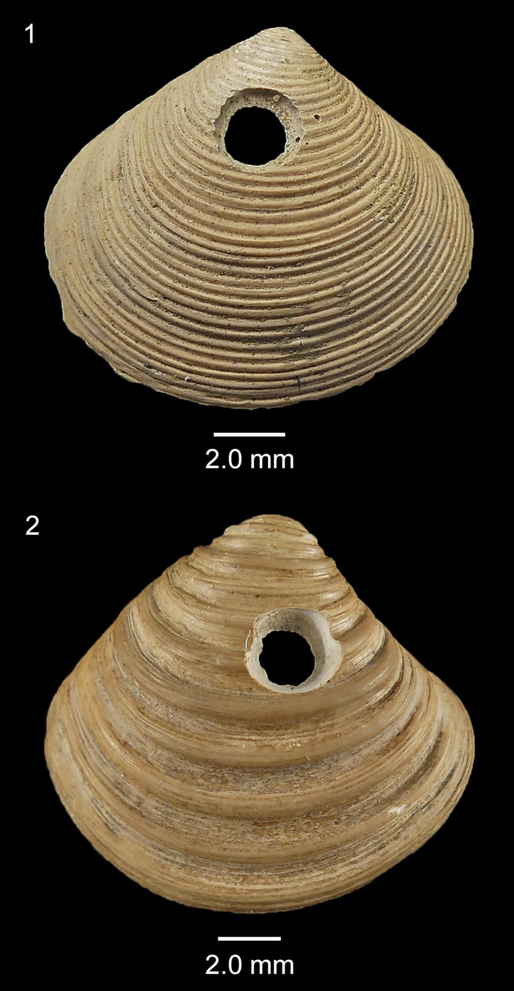Paleontologists have observed for the first time ancient predatory snails mistakenly drilling into empty mollusk shells.
Fossil traces of hunting provide excellent evidence of the relationships between predators and their prey. Scratches, bite marks, and other damages can, firstly, reflect the dynamics of predation — how often prey perished not by their own means, and secondly, help reconstruct food chains — who hunted whom. More details on this are provided by bromalites, fossilized remains of the digestive system, including fossilized excrement, but bite marks vividly illustrate the behavior of ancient animals.
Traces of ancient hunting failures are unique and therefore more valuable. Among fossils, they are rare, and specialists find it challenging to definitively determine how much a particular imprint indicates a predator's failure. However, two paleontologists from the USA recently reported several such cases. They noted that on some bivalve mollusk shells, a predator drilled holes not from the outside but from the inside. Apparently, this was done by mistake, but why? The researchers attempted to answer this question in an article published in the journal Journal of Paleontology.

Paleontologists examined 2,241 mollusk shells from the Neogene period (23.03-2.58 million years ago). The samples were excavated at different times from sand quarries in the Netherlands. Among the numerous fossils, specialists identified two specimens belonging to the marine bivalves Astarte goldfussi (dated to the Pliocene 5.333-2.58 million years ago) and Astarte incerta (dated to the Miocene 23.03-5.333 million years ago). Their shells were drilled from the inside, with holes measuring 1.65 and 1.4 millimeters in width, respectively.
Next, the specialists assessed how rare this phenomenon is: they counted how often such occurrences appear throughout the entire collection and among samples of individual species. It turned out that such fossils represent, on average, less than one percent, indicating that ancient predators rarely made mistakes while hunting, as many other shells had holes drilled from the outside.

The holes in the samples were most likely made by predatory snails from the family Naticidae (Naticidae) — remains of these invertebrates have been found in large numbers near the mollusk victims. According to the authors, this is the first report of such behavior among naticids and gastropods in general; previously, scientists had only documented fossil traces of successful hunting.
What caused the snails to drill the shell from the inside? The paleontologists proposed two hypotheses. It is possible that their prey detection system — which relies on either chemical signals or vibrations — malfunctioned. The snails mistakenly identified the dead mollusks as alive and began drilling into empty shells. Perhaps they were ill, or there were so many chemical signals in the water that the predator became confused.
The inner and outer surfaces of the shells differ significantly — the insides are smooth. Therefore, it is strange that the predatory snails did not notice the difference. It is likely they do not pay attention to the structure of the valves, although drilling into them unnecessarily is quite energy-consuming. This led the researchers to another hypothesis: the predators could have been so starved that they "pounced" (if we can say that about snails) on empty shells. In any case, the exceptional rarity of such occurrences indicates quite effective hunting methods among gastropods.